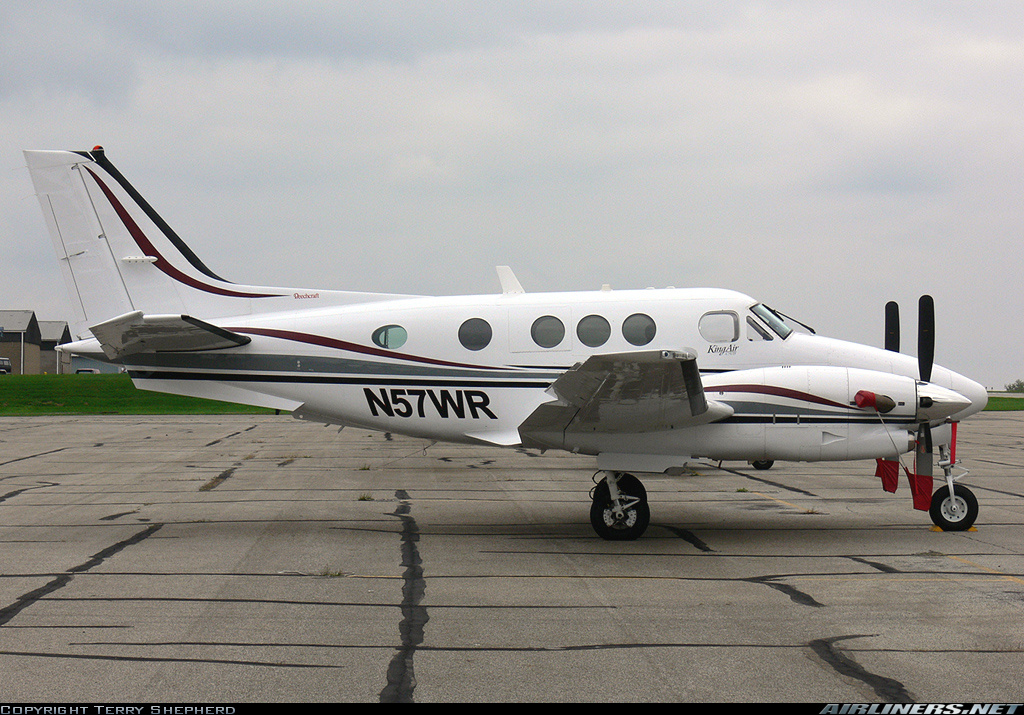Country
Crash of a Beechcraft F90-1 King Air in Mamuno
Date & Time:
Jan 21, 2009
Registration:
A2-AHV
Survivors:
Yes
MSN:
LA-212
YOM:
1983
Crew on board:
0
Crew fatalities:
Pax on board:
0
Pax fatalities:
Other fatalities:
Total fatalities:
0
Circumstances:
On approach to Mamuno Airstrip, the pilot decided to initiate a go-around procedure. After the undercarriage were raised, the twin engine aircraft continued to descent and hit the runway surface. It slid for few dozen metres then veered off runway to the left and came to rest in a grassy area. The high engine temperature set the grass on fire and the aircraft was destroyed by fire. There were no injuries among the occupants.
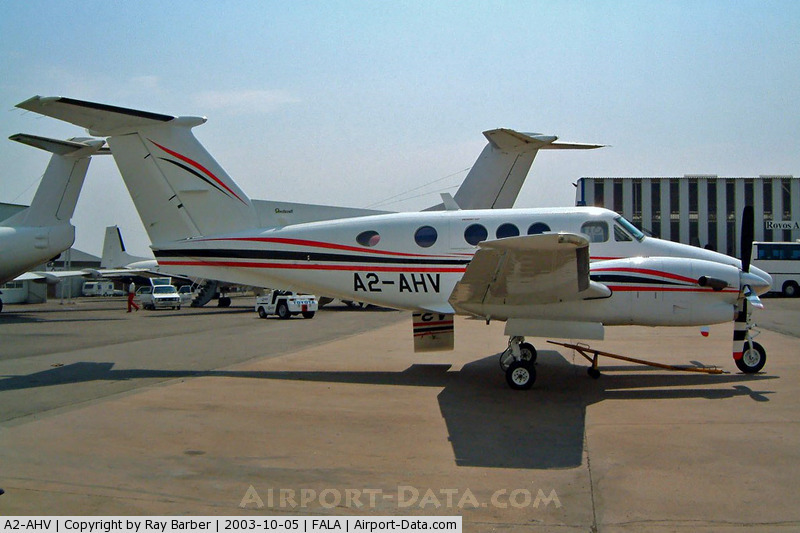
Crash of a Beechcraft C90B King Air in Rocksprings: 1 killed
Date & Time:
Dec 14, 2008 at 1500 LT
Registration:
N43KM
Survivors:
No
Schedule:
Hondo – Goodyear
MSN:
LJ-1345
YOM:
1993
Crew on board:
1
Crew fatalities:
Pax on board:
0
Pax fatalities:
Other fatalities:
Total fatalities:
1
Captain / Total hours on type:
250.00
Aircraft flight hours:
3725
Circumstances:
The pilot was cleared to 17,000 feet approximately 7 minutes after takeoff. After arriving at 17,000 feet, radar showed the airplane in a meandering flight path increasingly off course that continued through the end of the flight, even after several prompts from the controller. The pilot was cleared to flight level 240 (24,000 feet) after about 6 minutes at 17,000 feet, and about 2 minutes later, while passing through about 18,000 feet, he made his last radio transmission, acknowledging a corrected heading. About 6 minutes later, the airplane arrived at 24,000 feet and the pilot did not make any intelligible responses to controller inquiries for the remainder of the flight. At 1456, radar showed the airplane in a descent to 21,000 feet before beginning a rapid descent and continuing to impact. The airplane was substantially damaged by the impact forces and the pilot, who was the only occupant, was fatally injured. During the review of the air traffic control recordings, it was determined that none of the voice transmissions from N43KM sounded as if the pilot was speaking through an oxygen mask microphone. At the accident scene both bleed air switches were observed to be in the closed position and the airplane pressurization switch on the console was observed to be in the dump position. No other preimpact anomalies were observed that would have prevented the normal operation of the airplane.
Probable cause:
The pilot's failure to properly configure the pressurization controls, resulting in his impairment and subsequent incapacitation due to hypoxia.
Final Report:
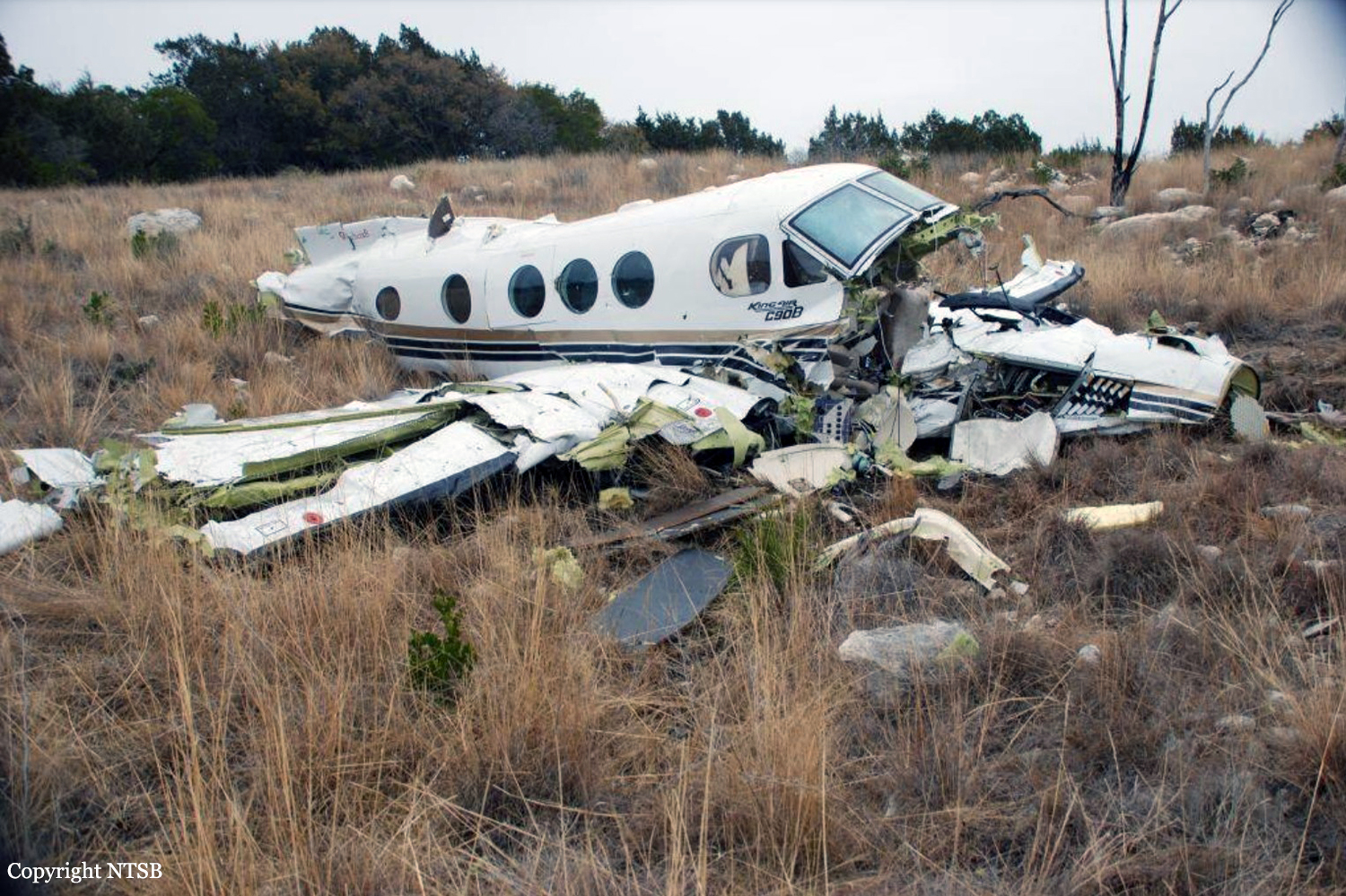
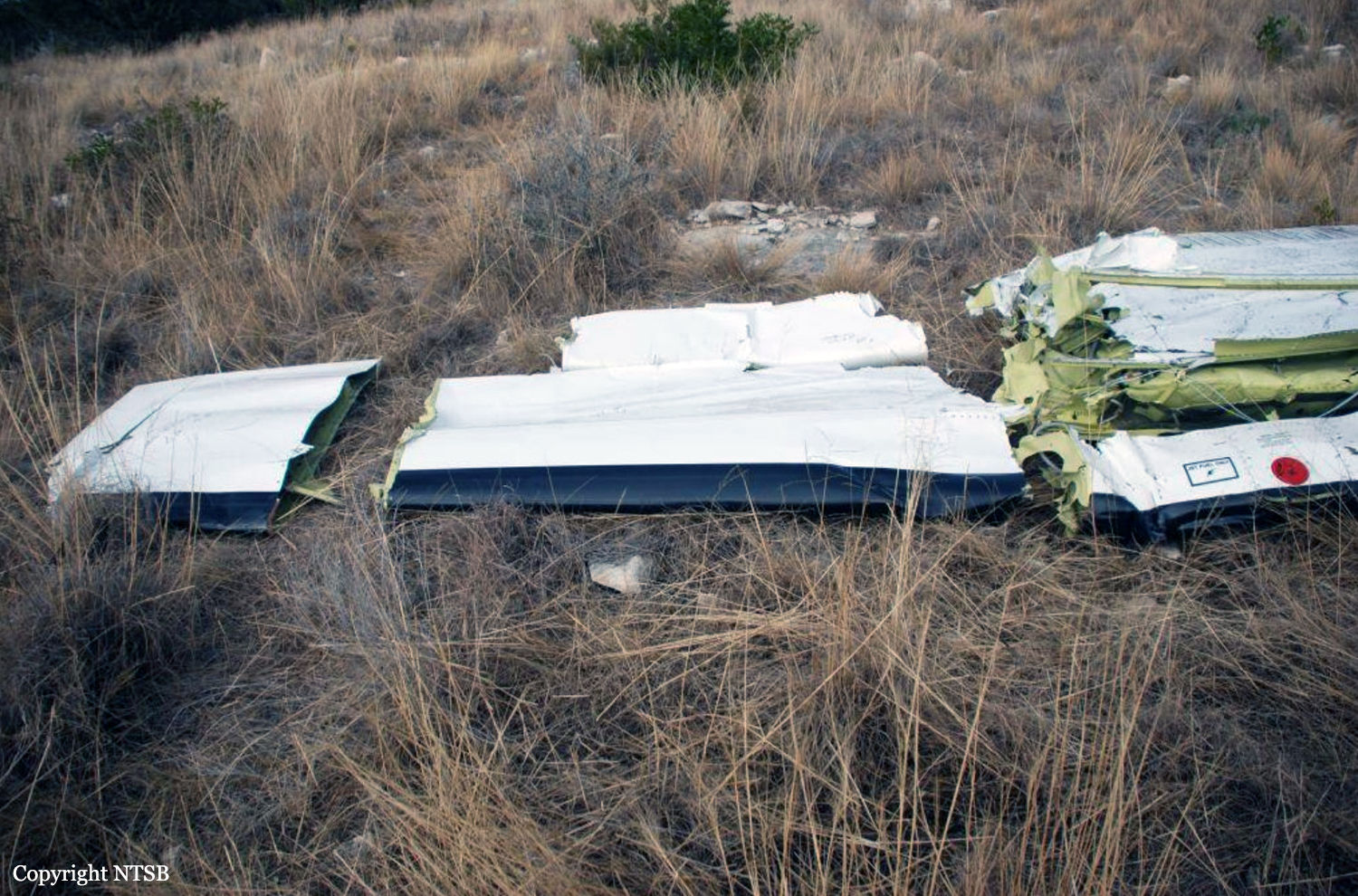


Crash of a Beechcraft 65-A90 King Air in Guyana: 3 killed
Date & Time:
Nov 1, 2008 at 1254 LT
Registration:
N87V
Survivors:
No
Schedule:
Imbaimadai - Imbaimadai
MSN:
LM-130
YOM:
1971
Crew on board:
2
Crew fatalities:
Pax on board:
1
Pax fatalities:
Other fatalities:
Total fatalities:
3
Circumstances:
The twin engine aircraft departed Imbaimadai for a geophysical research mission on behalf of a Canadian company, carrying one passenger and two pilots. The accident occurred in unknown circumstances and the aircraft was missing. SAR operations did not find any trace of the aircraft nor the three occupants.
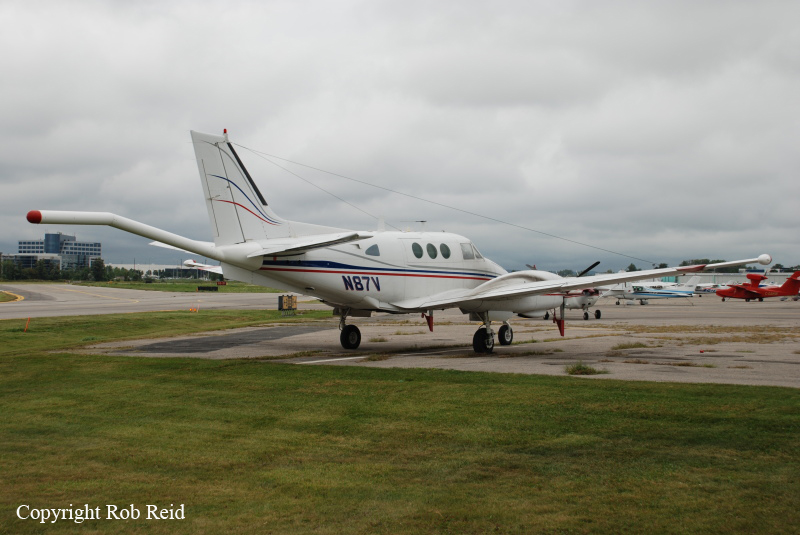
Crash of a Beechcraft C90 King Air in Chandigarh: 2 killed
Date & Time:
Oct 29, 2008 at 1125 LT
Registration:
VT-EHY
Survivors:
No
Schedule:
Chandigarh - Ludhiana
MSN:
LJ-1008
YOM:
1982
Crew on board:
2
Crew fatalities:
Pax on board:
0
Pax fatalities:
Other fatalities:
Total fatalities:
2
Captain / Total hours on type:
9.00
Copilot / Total hours on type:
13
Aircraft flight hours:
6530
Circumstances:
On 29.10.2008 Punjab Government King Air C90 aircraft, VT-EHY met with an accident while operating flight from Chandigarh to Ludhiana. This accident was notified to DGCA by ATC at Ludhiana and Punjab Government officials shortly after the occurrence. The accident occurred when the aircraft was in the process of making second attempt for landing at Ludhiana Airport. The accident was investigated by Inspector of Accident under Rule 71 of Aircraft Rules, 1937. As per the obligations under ICAO Annex 13, notification was sent to USA, the country of aircraft manufacture, Canada, the country of engine manufacture and ICAO. Transport Safety Board Canada appointed an accredited representative and authorized engine manufacturer M/s P&W to associate with investigation of engines. Low visibility conditions were prevailing at Ludhiana at the time of accident. Due to which the crew located the runway late. They were estimating their position based on GPS. Though they did spot the runway at some stage of the approach, they lost sight of it again and were unable to locate it subsequently. They carried out orbits on the right side (East Side) of R/w 12 in an effort to visually locate the runway and then followed non standard procedure to land. Not comfortable with the approach, the crew decided to go around. Due to low visibility and that they probably did not want to lose the sight of the airfield, carried out non-standard go around. In their anxiety not to lose the sight of the field they descended in three orbits in the vicinity of the airfield on the west side of R/w 12, perhaps to land after making the short circuit from the right. However, due to smoke in the cockpit, severe disorientation, lack of qualification & experience on type of aircraft and on sighting the communication tower, the panic gripped the crew. In their anxiety, the control was lost and aircraft impacted the ground in the steep left bank. Aircraft was destroyed in the crash due to impact and post impact fire. Both the occupant on board died due to fire and collapsing aircraft structure.
Probable cause:
The accident occurred due to loss of control while in base leg for landing at R/W 12 after executing go around on R/W 12.
Contributory Factors:
1) Low visibility reduced the margin of safety, may have caused severe disorientation, influenced their decision and played on crew for use of non standard procedures.
2) Both the crew lacked qualification/experience and familiarity with the type of aircraft and terrain.
3) Smoke in the cockpit further reduced the margin of safety and distracted the attention of the crew.
4) Obstruction in the flight path made the crew to take severe action and led to loss of control.
5) Lack of operational control and supervision by the organisation.
Contributory Factors:
1) Low visibility reduced the margin of safety, may have caused severe disorientation, influenced their decision and played on crew for use of non standard procedures.
2) Both the crew lacked qualification/experience and familiarity with the type of aircraft and terrain.
3) Smoke in the cockpit further reduced the margin of safety and distracted the attention of the crew.
4) Obstruction in the flight path made the crew to take severe action and led to loss of control.
5) Lack of operational control and supervision by the organisation.
Final Report:


Crash of a Beechcraft A90 King Air in Pitt Meadows
Date & Time:
Aug 3, 2008 at 1524 LT
Registration:
N17SA
Survivors:
Yes
Schedule:
Pitt Meadows - Pitt Meadows
MSN:
LJ-164
YOM:
1966
Crew on board:
1
Crew fatalities:
Pax on board:
7
Pax fatalities:
Other fatalities:
Total fatalities:
0
Captain / Total hours on type:
1290.00
Aircraft flight hours:
13257
Circumstances:
The Bill Dause Beech 65-A90 King Air (United States registration N17SA, aircraft serial number LJ-164) took off from Pitt Meadows Airport, British Columbia, with the pilot and seven parachutists for a local sky diving flight. At 1521 Pacific daylight time, as the aircraft was climbing through 3900 feet above sea level, the pilot reported an engine failure and turned back towards Pitt Meadows Airport for a landing on Runway 08R. The airport could not be reached and a forced landing was carried out in a cranberry field, 400 metres west of the airport. On touchdown, the aircraft struck an earthen berm, bounced, and struck the terrain again. On its second impact, the left wing dug into the soft peat, spinning the aircraft 180 degrees. Four of the parachutists received serious injuries and the aircraft was substantially damaged. There was no fire and the occupants were evacuated. The emergency locator transmitter functioned at impact and was turned off by first responders.
Probable cause:
Findings as to Causes and Contributing Factors:
1. The general condition of the aircraft, the engine time before overhaul (TBO) over-run and the missed inspection items demonstrated inadequate maintenance that was not detected by regulatory oversight.
2. The TBO over-run and missed inspections resulted in excessive spline wear in the left engine-driven fuel pump going undetected.
3. The left engine lost power due to mechanical failure of the engine fuel pump drive splines.
4. The horizontal engine instrument arrangement and the lack of recent emergency training made quick engine malfunction identification difficult. This resulted in the pilot shutting down the wrong engine, causing a dual-engine power loss and a forced landing.
5. Not using the restraint devices contributed to the seriousness of injuries to some passengers.
Finding as to Risk:
1. There is a risk to passengers if Transport Canada does not verify that holders of Canadian Foreign Air Operator Certificates-Free Trade Agreement meet airworthiness and operational requirements.
1. The general condition of the aircraft, the engine time before overhaul (TBO) over-run and the missed inspection items demonstrated inadequate maintenance that was not detected by regulatory oversight.
2. The TBO over-run and missed inspections resulted in excessive spline wear in the left engine-driven fuel pump going undetected.
3. The left engine lost power due to mechanical failure of the engine fuel pump drive splines.
4. The horizontal engine instrument arrangement and the lack of recent emergency training made quick engine malfunction identification difficult. This resulted in the pilot shutting down the wrong engine, causing a dual-engine power loss and a forced landing.
5. Not using the restraint devices contributed to the seriousness of injuries to some passengers.
Finding as to Risk:
1. There is a risk to passengers if Transport Canada does not verify that holders of Canadian Foreign Air Operator Certificates-Free Trade Agreement meet airworthiness and operational requirements.
Final Report:
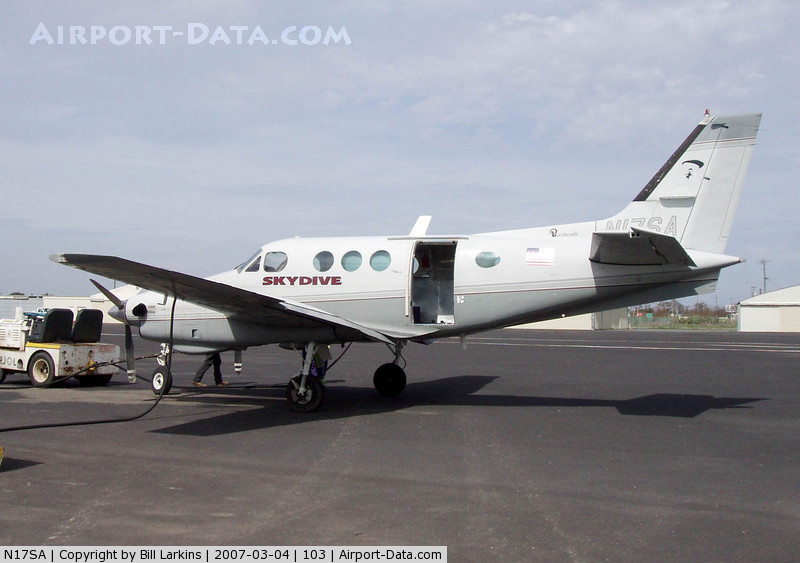
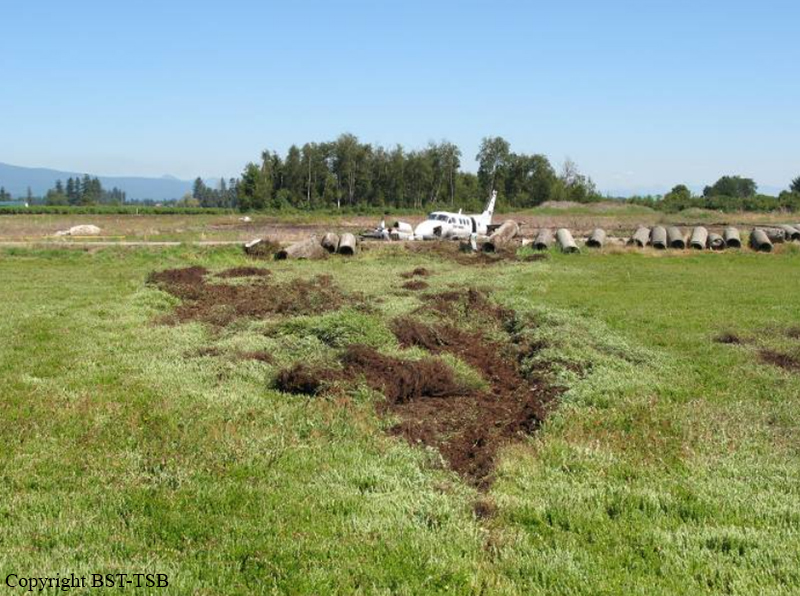
Crash of a Beechcraft C90B King Air in Contadora Island
Date & Time:
Jun 6, 2008
Registration:
HP-1635
Survivors:
Yes
Schedule:
Panama City - Contadora Island
MSN:
LJ-1663
YOM:
2002
Crew on board:
1
Crew fatalities:
Pax on board:
5
Pax fatalities:
Other fatalities:
Total fatalities:
0
Circumstances:
The twin engine aircraft departed Panama City-Marcos A. Gelabert Airport at 0734LT on a private flight to Contadora Island with five passengers and one pilot on board. Following an uneventful flight, the aircraft landed on wet runway 35. It skidded then veered off runway to the left and came to rest in bushes. All six occupants escaped uninjured while the aircraft was damaged beyond repair.
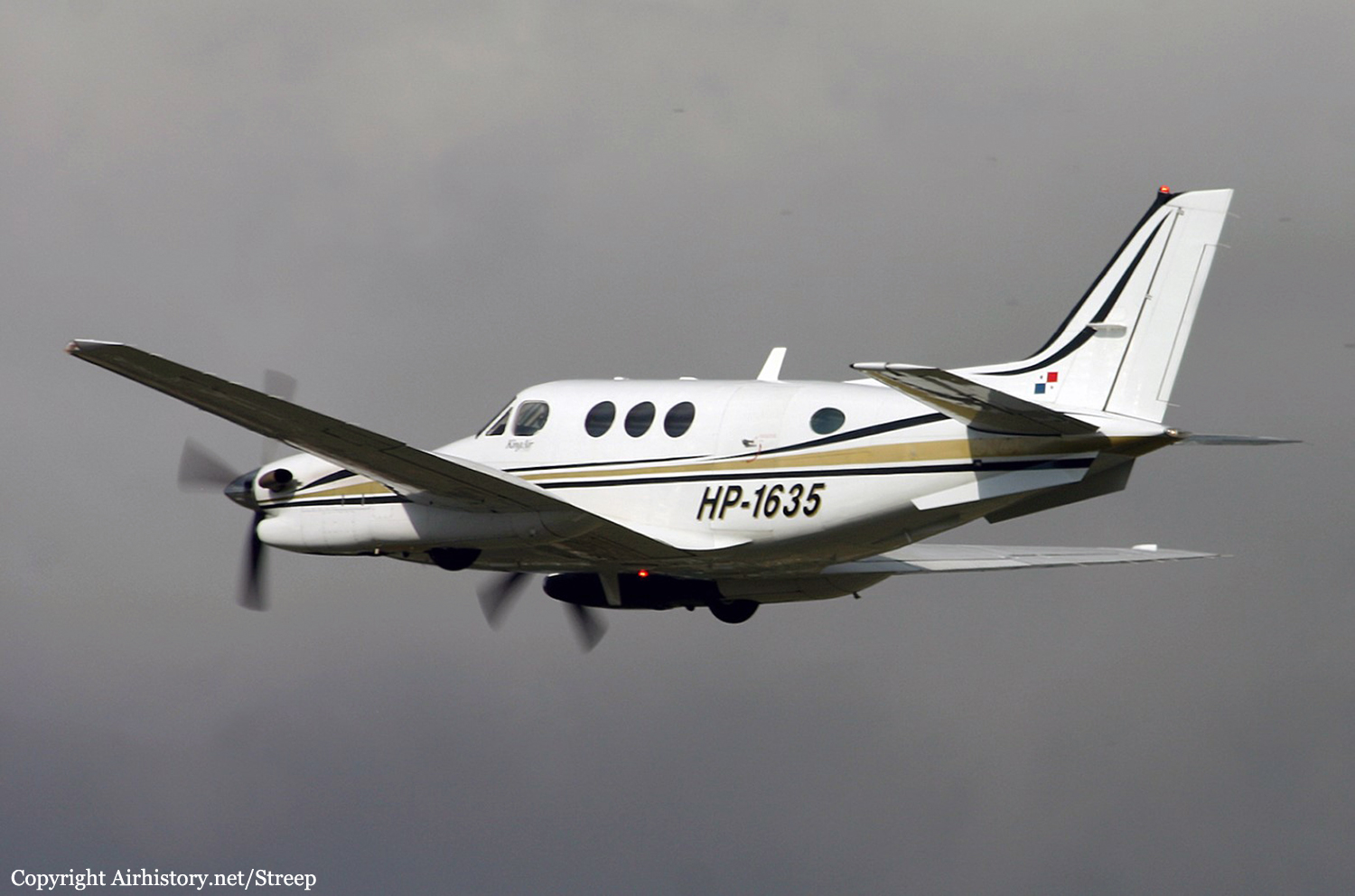

Crash of a Beechcraft C90A King Air in Mount Airy: 6 killed
Date & Time:
Feb 1, 2008 at 1128 LT
Registration:
N57WR
Survivors:
No
Schedule:
Cedartown - Mount Airy
MSN:
LJ-1678
YOM:
2003
Crew on board:
1
Crew fatalities:
Pax on board:
5
Pax fatalities:
Other fatalities:
Total fatalities:
6
Aircraft flight hours:
800
Circumstances:
While flying a non precision approach, the pilot deliberately descended below the minimum descent altitude (MDA) and attempted to execute a circle to land below the published circling minimums instead of executing the published missed approach procedure. During the circle to land, visual contact with the airport environment was lost and engine power was never increased after the airplane had leveled off. The airplane decelerated and entered an aerodynamic stall, followed by an uncontrolled descent which continued until ground impact. Weather at the time consisted of rain, with ceilings ranging from 300 to 600 feet, and visibility remaining relatively constant at 2.5 miles in fog. Review of the cockpit voice recorder (CVR) audio revealed that the pilot had displayed some non professional behavior prior to initiating the approach. Also contained on the CVR were comments by the pilot indicating he planned to descend below the MDA prior to acquiring the airport visually, and would have to execute a circling approach. Moments after stating a circling approach would be needed, the pilot received a sink rate aural warning from the enhanced ground proximity warning system (EGPWS). After several seconds, a series of stall warnings was recorded prior to the airplane impacting terrain. EGPWS data revealed, the airplane had decelerated approximately 75 knots in the last 20 seconds of the flight. Examination of the wreckage did not reveal any preimpact failures or malfunctions with the airplane or any of its systems. Toxicology testing detected sertraline in the pilot’s kidney and liver. Sertraline is a prescription antidepressant medication used for anxiety, obsessive-compulsive disorder, panic disorder, posttraumatic stress disorder, and social phobia. The pilot’s personal medical records indicated that he had been treated previously with two other antidepressant medications for “anxiety and depression” and a history of “impatience” and “compulsiveness.” The records also documented a diagnosis of diabetes without any indication of medications for the condition, and further noted three episodes of kidney stones, most recently experiencing “severe and profound discomfort” from a kidney stone while flying in 2005. None of these conditions or medications had been noted by the pilot on prior applications for an airman medical certificate. It is not clear whether any of the pilot’s medical conditions could account for his behavior or may have contributed to the accident.
Probable cause:
The pilot's failure to maintain control of the airplane in instrument meteorological conditions. Contributing to the accident were the pilot's improper decision to descend below the minimum descent altitude, and failure to follow the published missed approach procedure.
Final Report:
